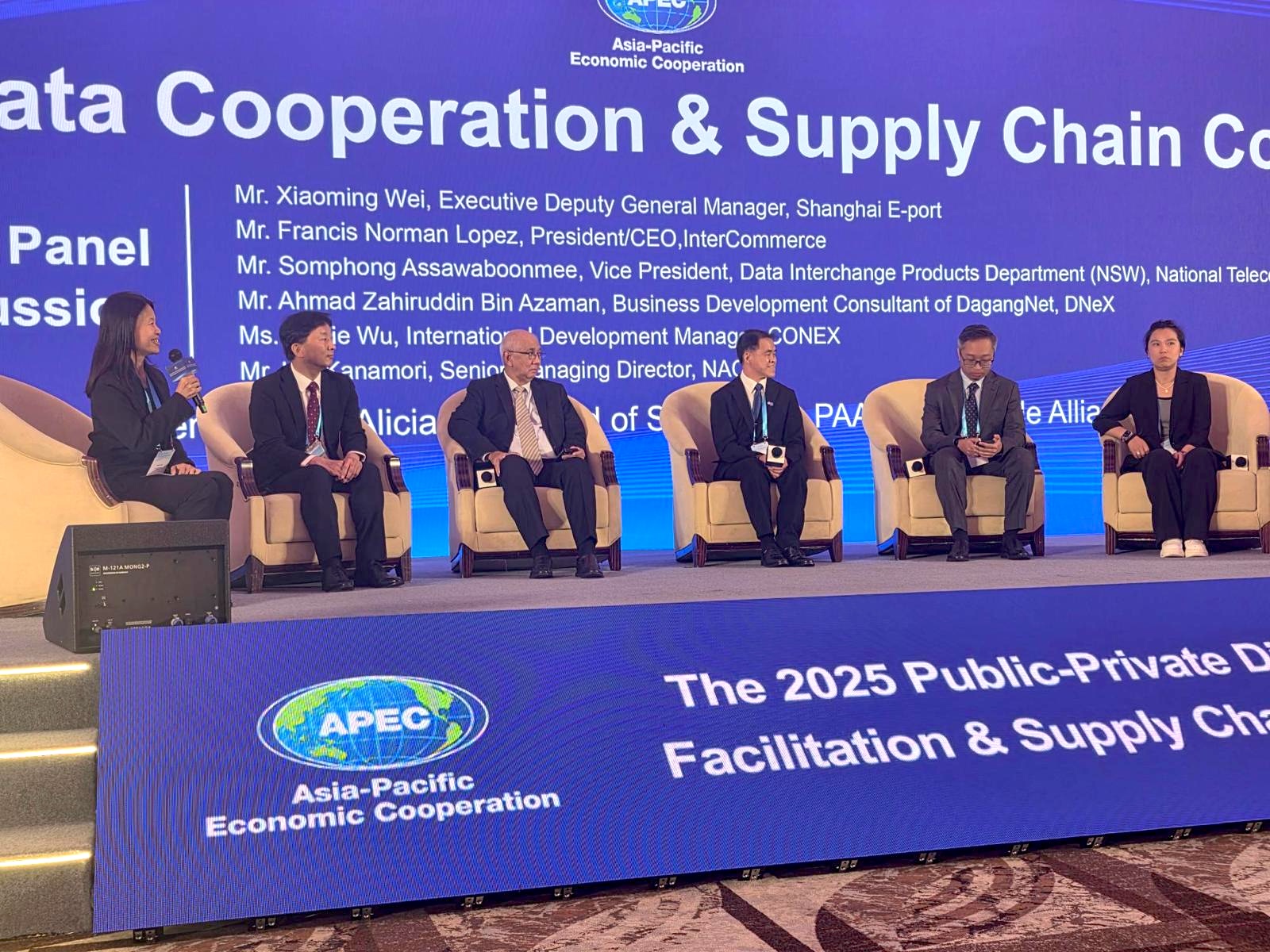2025 APEC Public-Private Dialogue on Trade Facilitation and Supply Chain Connectivity


On May 20, the “2025 APEC Public-Private Dialogue on Trade Facilitation and Supply Chain Connectivity” was successfully held in Shanghai. More than 200 representatives from relevant government agencies, E-port operators, business sectors of member economies of the Asia-Pacific Model E-Port Network (APMEN), the Asia-Pacific Economic Cooperation (APEC), and the PAA Digital Trade Alliance, as well as the relevant international organizations, participated in the event both online and offline.
Chen Zhiyang, Deputy Director-General of the Department of International Trade and Economic Affairs of the Ministry of Commerce, Luo Zhisong, Chairman of the APMEN Joint Operations Working Group and Chief Economist of the Shanghai Municipal Commission of Commerce, and Francis Norman Lopez, Vice Chairman of the PAA and representative of an APMEN member organization, attended the dialogue and delivered opening speeches. The event was chaired by Yao Weiqun, Chief Expert of the APMEN Operations Center and Distinguished Professor of Applied Economics at Shanghai University of International Business and Economics.
In his speech, Francis Norman Lopez emphasized that the collaboration between APMEN and PAA members is strategically aligned. Through technological innovation and process optimization, member economies are advancing the digital transformation of cross-border trade, striving to promote greater transparency in cross-border procedures, faster customs clearance, lower business costs, and enhanced trade financing opportunities for micro, small, and medium-sized enterprises (MSMEs). He stated that PAA will further deepen its cooperation with APMEN members, jointly shaping a smarter, more efficient, and inclusive future for global trade.
This dialogue, anchored in digital technology, served as a platform for facilitating cross-border data cooperation and empowering international collaboration. It aimed to share best practices in applying digital technologies to optimize supply chains, explore trusted pathways for enabling cross-border data flows, and exchange experiences in cross-border data cooperation to support interconnected, seamless cross-border supply chains.